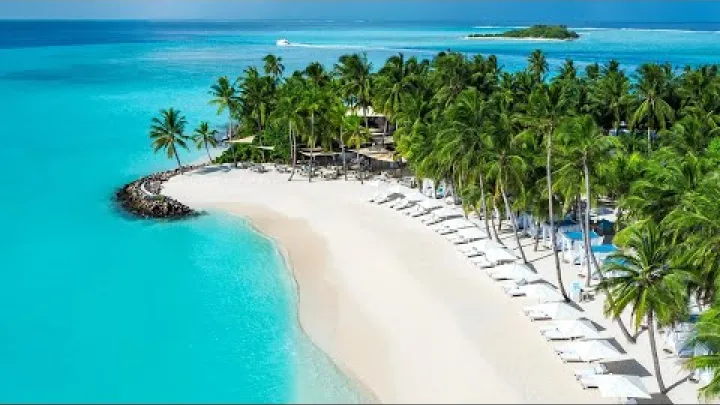The Pros and Cons of Living in the Philippines
The Pros
FILIPINOS ARE SOME OF THE FRIENDLIEST PEOPLE IN THE WORLD
Have you ever been around a Filipino person? Chances are if you have, you know firsthand just how friendly they truly are. Not only do Filipinos provide a warm welcome to anyone who visits their country, but they also provide an unparalleled level of hospitality that has made them some of the most beloved people in the world. Let’s explore why Filipinos are so widely known as some of the friendliest people in the world.
The Filipino Culture
To understand why Filipinos are so friendly, it's important to look at their culture. In the Philippines, hospitality is highly valued and there is a great emphasis placed on being kind and welcoming to visitors. This is seen not just with visitors, but also with family members or friends who come over for a visit or even houseguests who stay for an extended period. It's not uncommon for Filipino families to roll out the red carpet for their guests, providing all sorts of food, drinks, and entertainment.
The Filipino Language
Another reason why Filipinos are known as some of the friendliest people in the world is that they have such an inviting way of speaking. The language used by native speakers contains plenty of endearments and expressions of warmth that make conversations feel more like conversations between old friends than strangers. When conversing with a Filipino person, it's not uncommon to hear words like “po” or “opo” which show respect and appreciation for another person's opinion or presence in general. Furthermore, when saying goodbye to someone they may say "paalam" which means "I will miss you." These kinds of endearments help create strong bonds between people from different backgrounds and countries—a testament to how warmly Filipinos view others around them!
Smiles Everywhere You Go
Last but not least, Filipinos are well-known for having one of the widest smiles in the world! Whether it be in Manila or Cebu City (or anywhere else in between), you'll find plenty of locals flashing wide grins everywhere you go—another testament to how warmly these people view those around them. Smiling helps create a relaxed atmosphere wherever one goes and makes any visitor feel right at home—something that can't be said about many other cultures!
Conclusion
It's no wonder why Filipinos have become one of the most beloved peoples in the world—their hospitality knows no bounds! From their culture that values kindness above all else to their language full of endearment and warmth to their wide smiles that make visitors feel welcome everywhere they go; these traits make Filipinos some of the friendliest people on Earth! Whether you're visiting Manila or Cebu City (or anywhere else), take a moment to appreciate just how hospitable these wonderful people truly are.
THE PHILIPPINES HAS SOME OF THE BEST BEACHES IN THE WORLD
Blog Introduction: From the crystal clear waters of Boracay to the hidden coves of Palawan, the Philippines is home to some of the most stunning beaches in the world. Whether you’re looking for an idyllic spot to relax and take in the scenery or a more adventurous beach experience, this island nation has something for everyone.
Think Boracay
Boracay has become one of the hottest beach destinations in Southeast Asia and it’s easy to see why. With its white sand beaches and turquoise lagoons, this picturesque island is a paradise like no other. In addition to its breathtaking beauty, Boracay also offers plenty of activities to keep visitors entertained such as windsurfing, parasailing, and scuba diving. There are also numerous restaurants and bars located along White Beach, making it easy to grab a bite or a drink while taking in the stunning views.
Discover Palawan
Palawan is another popular destination among beachgoers. This tropical paradise features some of the most beautiful landscapes in all of Asia with its unspoiled beaches, limestone formations, and hidden lagoons just waiting to be explored. For those looking for adventure, there are plenty of activities here too from kayaking around Puerto Princesa Subterranean River National Park to snorkeling at Honda Bay Islands.
Visit Siargao Island
Siargao Island is quickly becoming one of the most popular beach spots in the Philippines with its crystal clear waters, white sandy beaches, and vibrant coral reefs. Those looking for adrenaline-filled activities can try their hand at surfing on one of Siargao’s many waves or explore some of the nearby caves by kayak. If you’re feeling adventurous there are also plenty of opportunities for deep-sea fishing and kiteboarding on Siargao Island.
Conclusion
The Philippines is home to some of the best beaches in the world—from white sand shores and crystal clear waters to hidden coves and turquoise lagoons—with something for everyone here! Whether you're looking for an idyllic spot to relax or an adventure on the waves, you're sure to find it in this tropical paradise! So if you're planning your next beach getaway, consider heading over to The Philippines—you won't regret it!
THE COST OF LIVING IN THE PHILIPPINES
If you’re looking for a place to live on a budget, the Philippines is an attractive option. The cost of living here is much lower than in other countries, meaning that expats can save money while still enjoying all the amenities available. From rent and utilities to food and entertainment, let’s break down what life costs in the Philippines.
Rent & Utilities
The cost of rent and utilities varies greatly depending on location. In Manila, the capital city of the Philippines, monthly rent for a one-bedroom apartment can range from 10,000-30,000 PHP ($200-600 USD). However, if you look outside of major cities like Manila or Cebu City, you could find much more affordable options. For instance, renting a one-bedroom apartment in Baguio City (in northern Luzon) will only set you back 4500-6000 PHP ($90 - 120 USD) per month.
Utilities like electricity and water are also very affordable in the Philippines. Electricity bills typically range from 1000-2000 PHP ($20 - 40 USD) per month depending on usage and location. Water bills usually run at around 800 PHP (USD 16) per month for households with up to 5 people. The Internet can be expensive though – expect to pay 1500–2500 PHP ($30 - 50 USD) per month depending on your provider and internet speed.
Food & Entertainment
When it comes to food and entertainment costs in the Philippines, there are plenty of options for people on a budget. Eating out at local restaurants (called “carinderia” or “turo turo” in Filipino) will only set you back around 100–150 PHP ($2 - 3 USD). Groceries are also quite affordable – most staples like rice, eggs, vegetables, etc can be bought for less than 200 PHP (USD 4). Entertainment expenses can also vary greatly depending on your lifestyle; going out to bars/clubs can be done cheaply if you stick to local establishments but can get more expensive if you frequent high-end clubs or resorts.
Conclusion
The cost of living in the Philippines is significantly lower than in many other countries – which makes it an attractive destination for expats looking to save money while having access to all necessary amenities. From rent and utilities to food and entertainment expenses, living costs in this Southeast Asian country are quite reasonable – so long as one is willing to shop around for good deals! Whether you’re planning a move or just interested in seeing how much things cost here, understanding Philippine prices is a great way to get started when budgeting your finances during your stay!
The cons
THE TRAFFIC IN MANILA IS VERY BAD
Manila, Philippines is known for its heavy traffic and if you're planning to live there, you need to be prepared. Whether it's rush hour or not, traffic in Manila can be a major problem. But don't worry—we've got some tips and tricks on how to survive the traffic in Manila. Read on to learn more!
The Causes of Traffic Congestion in Manila
Before we discuss how to survive the traffic in Manila, let's take a look at why it's such a big issue. The primary cause of road congestion in the city is the increasing number of cars on the streets. According to an estimate from 2018, there are around 3 million registered vehicles in Metro Manila alone. This number continues to rise every year as more people choose cars over public transportation.
Another factor that contributes to traffic congestion is the lack of infrastructure projects aimed at making travel easier and faster for commuters. Despite numerous plans by local government officials, there has been little progress made when it comes to building new roads or improving existing ones. This has resulted in a situation where roads are often overcrowded and unable to handle large numbers of vehicles during peak hours.
Tips for Surviving Traffic in Manila
Now that we know what causes traffic congestion in Manila, here are some tips that can help you survive it:
- Avoid rush hour – If possible, try to avoid driving during rush hour (7-9 AM and 6-8 PM). Not only will this help reduce your stress levels but also save you time and fuel costs as well.
- Take public transportation – Taking public transportation can be an efficient way of traversing through the city without having to sit behind the wheel all day long. Buses and trains are available throughout Metro Manila and they offer cheaper fares than taking private transport services like taxis or ride-sharing apps like Grab or Angkas.
- Embrace carpooling – Carpooling is becoming increasingly popular among commuters because it allows them to share their rides with friends or co-workers while reducing overall costs for everyone involved. Apps like Tripda make it easy for users to arrange carpools with other travelers going their way so they can all reach their destinations faster and cheaper!
Conclusion
Living in a highly congested city like Manila isn’t easy but with these tips, you can survive even the most daunting traffic conditions! By avoiding rush hour times, utilizing public transportation options, and embracing carpooling whenever possible, you'll be able to navigate through one of Asia’s busiest cities with ease! Best of luck out there!
THE AIR POLLUTION IN MANILA CAN ALSO BE QUITE BAD AT TIMES
Manila is a bustling, vibrant city full of life and culture. It can be a great place to relocate to; however, it's important to understand the air quality before making your final decision. Unfortunately, air pollution can be quite bad at times in Manila, which means that you may need to take extra precautions when visiting or living here. Let’s take a closer look at why air pollution is so bad in Manila and how you can protect yourself from it.
The Causes of Air Pollution in Manila
The main cause of air pollution in Manila is vehicular traffic. With the city's population growing rapidly over the last few years, there has been an increase in the number of cars on the roads as well as other types of transport such as buses and motorcycles. This has led to an increase in emissions from these vehicles which are then trapped within the city limits due to its geography and lack of wind. Additionally, factories located near urban areas often release large amounts of pollutants into the atmosphere, further contributing to air pollution levels.
How To Protect Yourself From Air Pollution
The best way to protect yourself from air pollution is to limit your exposure whenever possible. This means avoiding heavily polluted areas such as those near busy roads or factories when possible and staying indoors if the air quality outside is particularly bad. If you do need to go out when pollution levels are high, try wearing a mask or scarf over your face and eyes as this will help filter out some of the pollutants you breathe in. Additionally, make sure that any windows or doors that open onto polluted areas are closed during times when there may be increased emissions outside (such as rush hour).
Conclusion
It’s important for anyone considering relocating to Manila (or visiting for an extended period) to understand that air pollution can be quite bad at times - much worse than in many other cities around the world. By being aware of this before making your decision and taking appropriate steps such as limiting your exposure and wearing protective masks when necessary, you can reduce any potential health risks posed by the poor air quality in Manila.
TYPHOONS AND EARTHQUAKES
The Philippines is a beautiful and diverse country, with crystal clear waters, lush greenery, and an abundance of wildlife. But sadly, it is also located in an area prone to natural disasters such as typhoons and earthquakes. While these events can be unpredictable, it’s still important to prepare your family for any potential emergency that may occur.
What to Do Before a Natural Disaster Strikes
If you live in the Philippines, it’s essential to have an evacuation plan in place before any natural disaster happens. Make sure everyone in the family knows what route to take if you need to leave quickly. It’s also important to make sure you have plenty of supplies like flashlights, food, water, batteries, and first aid kits on hand so that your family is prepared for any power outages or other emergencies that may arise.
It’s also a good idea to contact your local government offices and ask about any additional safety protocols they might suggest in the event of a natural disaster. This could include setting up community shelters or evacuating certain areas at specific times. Knowing this information ahead of time will make sure you have ample time to prepare properly if needed.
How To Stay Safe During Typhoons & Earthquakes
When faced with a natural disaster like a typhoon or earthquake, it’s important to stay as calm as possible and follow directions from authorities carefully. Always wear sturdy shoes and clothing when evacuating so that you don’t get injured by debris flying around during strong winds or shaking ground during an earthquake. If possible, wear protective gear such as helmets or goggles when outside during dangerous weather conditions like hurricanes or thunderstorms. And above all else—never try swimming away from danger! Water currents during heavy rains can be incredibly strong and unpredictable making it very easy for even experienced swimmers to get into trouble quickly.
Conclusion Living in the Philippines means living with the occasional risk of coming face-to-face with typhoons and earthquakes; however, if you are adequately prepared beforehand then there is no need to fear these natural disasters! Make sure your family has an evacuation plan in place along with emergency supplies ready just in case you do have to evacuate quickly due to unforeseen circumstances. Lastly—always stay safe! Follow instructions carefully during any kind of emergency and always wear protective gear when going outside during dangerous storms or earthquakes. With proper preparation, anyone can stay safe during a natural disaster!
Corruption
Corruption is an unfortunate reality in the Philippines. From government officials to police officers, many people expect bribes as part of their jobs. This can be a difficult thing to navigate when moving to or visiting the country. To help you understand corruption and how to avoid it, let’s break down what corruption looks like in the Philippines, its prevalence, and some tips for avoiding it.
What Does Corruption Look Like?
Corruption takes many forms in the Philippines. It ranges from small-scale bribery such as paying a few pesos for a bus ticket to larger-scale bribery such as paying government officials for access to public services or resources that should be free. As a result, people who are new to the country may find themselves in situations where they are expected to pay bribes even if they don’t want to.
How Prevalent is Corruption?
Unfortunately, corruption is very prevalent in the Philippines and has been for many years. Bribery is seen as an accepted part of everyday life and many people do not think twice about engaging in it. A 2018 survey revealed that 90% of Filipinos believe that corruption exists in their country and nearly half said that they had personally been asked for a bribe or knew someone who had been asked for one while trying to access public services or resources.
Avoiding Corruption
Though it can be difficult, there are ways to avoid corruption when living or traveling in the Philippines. Firstly, try your best not to engage with anyone asking for bribes—even if this means having to find an alternative solution. Secondly, seek out organizations like Transparency International which work towards eliminating corruption globally. Finally, make sure you do your research before traveling anywhere unfamiliar so you know what kind of situations you may encounter and how best to handle them without resorting to bribery or other unethical practices.
Conclusion
Corrupt behavior is unfortunately common in the Philippines; however, with some knowledge and preparation, it can be avoided by those living or traveling there. From knowing what kinds of corrupt behavior exist and how prevalent it is throughout the country to seek out organizations that are actively working towards eliminating corruption globally - there are lots of steps we can take individually and collectively when it comes to fighting against corrupt behavior both at home and abroad!
Overall
So there you have it, the pros and cons of living in the Philippines. Overall, it is a beautiful country with a lot to offer expats and tourists alike. But some challenges come with living here that should be taken into consideration before making the move.
Your Nearby Location
Your Favorite
Post content
All posting is Free of charge and registration is Not required.






